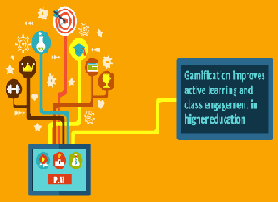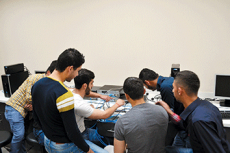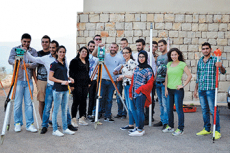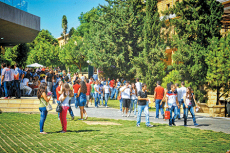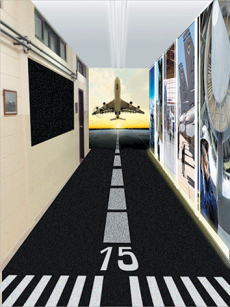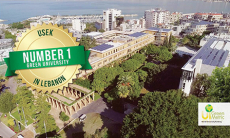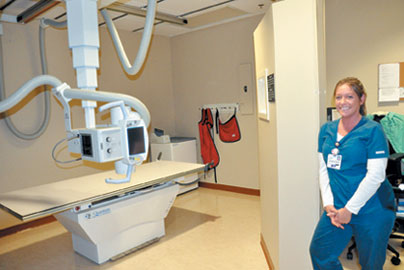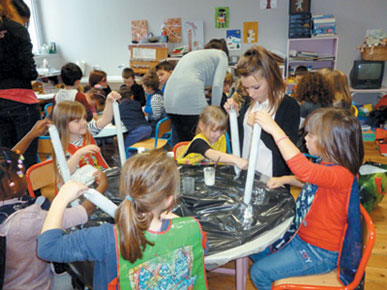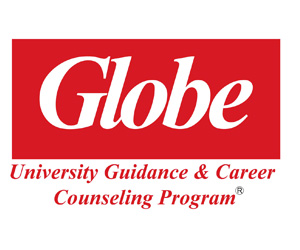AUB study: Gamification improves active learning and class engagement in higher education
Multimedia and new media figured prominently in a number of the research papers presented at the conference. These included proposals to blog or use Facebook in teaching; produce documentaries in science classes; adopt interactive learning tools, including e-learning; conduct classes outside the classroom; or create courses by collaborating with other universities in different countries… All proposals had one aim in common: to enhance students’ learning experience and their analytical and critical thinking skills, while helping them gain and retain knowledge more effectively.
For Jasmina Najjar, an AUB instructor of English communication skills, it made perfect sense to tap into the fun, the competitiveness, and the rewards and rules that characterize games, applying them in the classroom.
So, Najjar has already “gamified” three courses she teaches with marked success: ENGL 204 (Advanced Academic Writing), ENGL 206 (Technical Communication), and ENGL 215 (20th Century Literature).
She presented her findings, based on her own in-class experimentations during the Fifth International Conference on Effective Teaching and Learning in Higher Education, held at AUB, and organized by Center for Teaching and Learning (CTL) in collaboration with IT Academic Services and the Communication Skills Program.
“A key point to remember about gamification is that learning is not made into a game; but the features of games (curiosity, collecting, exploration, and domination to name a few), which entice players to engage, are used to draw in learners,” Najjar said, adding that gamification and game-based learning are two different things. While game-based learning involves actual “serious” games that are tied to learning outcomes and are designed to teach a certain skill or knowledge set, gamification might not incorporate a single actual game in class.
“Gamification is not really about points, rewards and badges. It is primarily about engagement and enhanced learning, when done well,” she added.
Over several semesters, Najjar discovered that certain elements of gamification work very well in higher education: having rules, having a narrative in place, and rewards. “Other aspects don’t work well at all, such as having penalty points or allowing the ‘warring factions’ to form alliances,” she explained.
Basic elements that make gamification effective include the way it motivates students to work harder because of the fun competition.
Najjar warned, however, that effective gamification is not quick and easy to design, taking time to get it right and involving trial and error. “Gamification is not ideal for every course or learning context (though there are attempts to sell it this way). And it does not miraculously make boredom disappear from the classroom. This depends on the approach, assignments and implementation,” she said.
When done properly, gamification increases student engagement and shows evidence of students becoming active learners, as Najjar noticed in her own courses. Although gamification works for all courses, the marked change in class dynamics is most apparent in courses that are normally not very interactive (such as Technical Communication). Courses that are normally interactive and full of class discussions (such as 20th Century literature) are spiced up by gamification, but the difference is less dramatic.
While gamification is not new to apps and marketing campaigns, it is a relative newcomer to the education sector, which is quickly catching up, and showing promising results “as it has the ability to make learning fun, which definitely appeals to students in the 21st Century,” Najjar said.
“I think more schools will turn to game-based learning, more schools and universities will embrace gamification, and I suspect more apps and tools will be developed to facilitate this. With the rapidly changing face of education, the need for more engaging methods of teaching is real.”
Najjar concluded, “Gamification is a promising solution but I don't think it's the magic wand or the one and only solution. But it will definitely play a significant role for years to come.”
The academic conference also included training workshops, presentations of tens of academic papers on effective teaching and learning, and a keynote speech by Milton D. Cox, professor and director of Lilly Conference on College Teaching Miami University, Ohio.
Under the title, “Why Active Learning is not Working: Answers and Solutions from Implementation Science,” Cox’s keynote speech was meant to spur educators to find ways to implement active learning effectively.
“Even though research has shown that active learning improves student performance, there are many faculty members who do not use it,” said Saouma Bou Jaoude, CTL director, commenting on Cox’s thought-provoking speech title. “Cox’s argument is that we have to approach the implementation of active learning in a scientific manner so that the chances of it working increase.”






